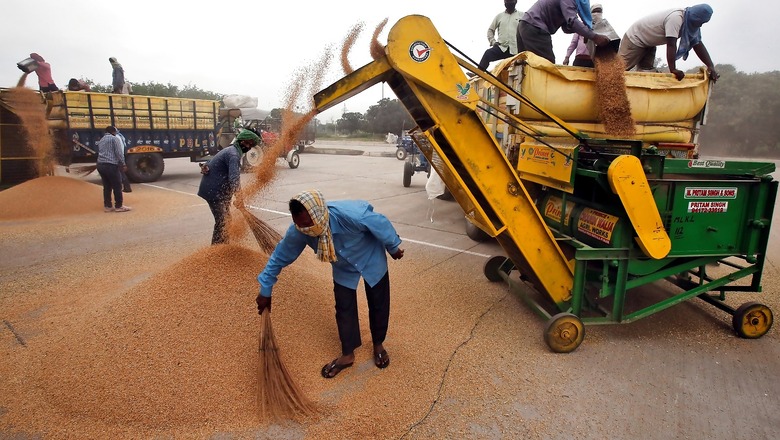
views
Russia’s invasion of Ukraine could result in less bread on the table in several middle eastern countries including Egypt, Lebanon, Yemen and other Arab world countries where millions already struggle to survive. Russia and Ukraine together account for over 30 percent of global wheat exports.
The fighting between the two countries continues as Western nations and international organisations continue to impose strict sanctions on Russia. Russia, being one of the world’s largest exporters of wheat, could suffer from these sanctions and hurt the supply in the West Asian countries.
On the other hand, India, which has not been a traditional exporter of wheat, has managed to export ship out large quantities of rice and wheat in the last two years.
News18 takes a look at how Russian-Ukraine conflict could hurt food grain supply and where does India stand in this cycle.
Food problem
If the war in Ukraine continues for several weeks more, it will prevent Ukrainians from planting the wheat, while the sanctions imposed by the West will prevent Russia from selling its produce. As a result, the prices of grain will continue to rise steeply, causing sharp rises in the prices of bread, milk, meat, and other products. Most of the Middle Eastern countries are majorly dependent on imports for food supplies.
Who are the Consumers?
According to reports, Lebanon buys 81 per cent of its national wheat consumption from Ukraine and 15 per cent from Russia. Egypt buys 60 per cent of the wheat it consumes from Russia and 25 per cent from Ukraine. Turkey has a similar proportion: 66 per cent of wheat imports come from Russia and 10 per cent from Ukraine.
Many countries, including Egypt, Lebanon, Libya, and Turkey will face difficulties to pay for the surge prices of food grains. It could either lead of governments forcing to reduce or even abolish subsidies for bread, risking violent popular protests.
Countries looking alternate sources
With the rising fear of supply shortage, Middle eastern countries are struggling to find alternate sources of wheat after the Russian invasion of Ukraine has put supply in jeopardy. Egypt, last year, imported about 85 per cent of the wheat it needed from Russia and Ukraine. However, it needs to find urgently alternative sources of supply. Recently the country also cancelled an international tender for the supply of wheat from France, as only one tender was received, instead of a minimum of two offers required. Also, the price of bread has been a politically explosive issue in the country as on several occasions in the past 50 years, the country has seen angry protests.
Lebanon is facing a similar problem with grain supplies, as it imports more than 80 per cent of the grain it needs. The country does not have a strategic stockpile of grains due to the enormous explosion in the port of Beirut in August 2020 which had destroyed its only large grain silo.
Turkey’s grain imports have increase to record levels as the demands have grown due to multiple reasons including the country being major producer of pasta, flour, biscuits and semolina; devaluation of lira and its 5 million refugees.
Opportunity for India?
India is set to export a record 7 million tonnes of wheat this year as the surging global prices provides the world’s second biggest producer of the grain an opportunity to gain market share.
It is a well-known fact that New Delhi has recently sent 4,000 tonnes of the grain to Afghanistan as the country is facing food shortage after Taliban takeover. India, with its surplus produce, will send 50,000 tonnes of wheat to Afghanistan.
India, which accounts for barely 1 percent of global wheat exports, can try and tap a sizeable portion of the world wheat trade. India has more than 100 million tonnes of the staple in granaries, while the domestic output is expected to touch a record 316 million tonnes in 2021-22.
India is expected to export a record 7-8 million tonne of wheat in Fiscal Year 2022 while the exports during April-October surged 546% year-on-year to $872 million.
Read all the Latest News India and Breaking News here

















Comments
0 comment